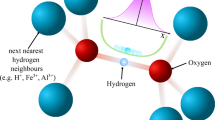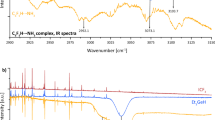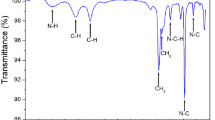Abstract
THE structures of hydrogen-bonded molecular crystals have been studied extensively, and the resulting histograms of the distributions of the O–H ċ O bond angles θ show maxima at approximately 15° from the linear configuration1–3. At first sight this seems odd, because theoretically a linear hydrogen bond is stable4,5. Kroon and Kanters3 have indicated, however, that because the number of possible hydrogen bond configurations at any value of θ is proportional to sinθ, these histograms should not be interpreted to indicate that the configuration of θ = 15° is, energetically, the most stable. They applied the sinθ correction to the statistics of a series of 196 values of hydrogen bond angles in molecular crystals, and showed that the experimental distributions are not inconsistent with an assumed preference for linear hydrogen bonds.
This is a preview of subscription content, access via your institution
Access options
Subscribe to this journal
Receive 51 print issues and online access
$199.00 per year
only $3.90 per issue
Buy this article
- Purchase on SpringerLink
- Instant access to full article PDF
Prices may be subject to local taxes which are calculated during checkout
Similar content being viewed by others
References
Hamilton, W. C., and Ibers, J. A., in Hydrogen Bonding in Solids, 214 (Benjamin, New York, 1968).
Ferraris, G., and Franchini-Angela, M., Acta crystallogr., B 28, 3572–3583 (1972).
Kroon, J., and Kanters, J. A., Nature, 248, 667–669 (1974).
Hankins, D., Moskowitz, J. W., and Stillinger, F. H., J. chem. Phys., 53, 4544–4554 (1971).
Hasegawa, M., J. phys. Soc. Japan, 28, 266 (1970).
Author information
Authors and Affiliations
Rights and permissions
About this article
Cite this article
HASEGAWA, M., NODA, H. Distribution of hydrogen bond angles in molecular crystals. Nature 254, 212 (1975). https://doi.org/10.1038/254212a0
Received:
Issue date:
DOI: https://doi.org/10.1038/254212a0



